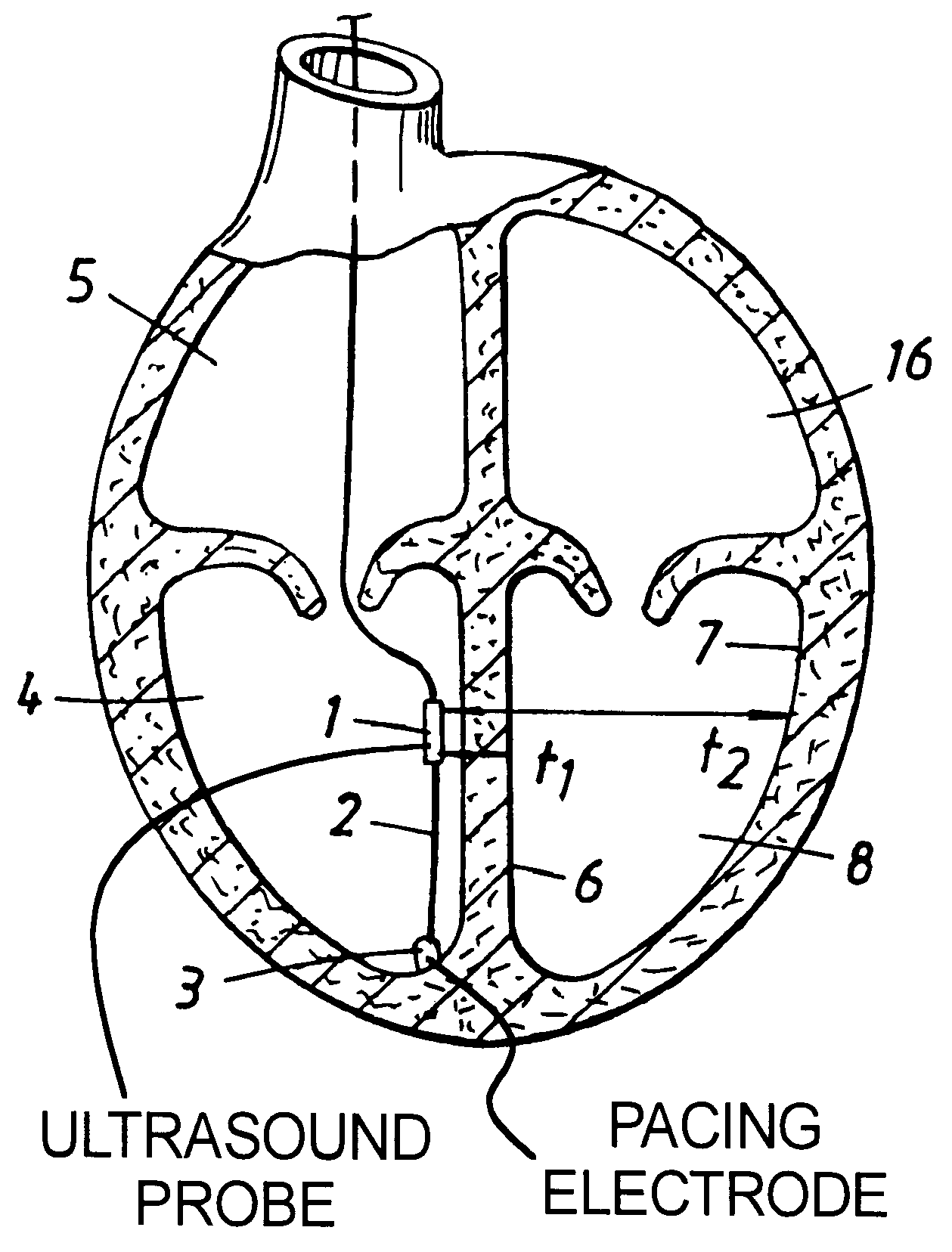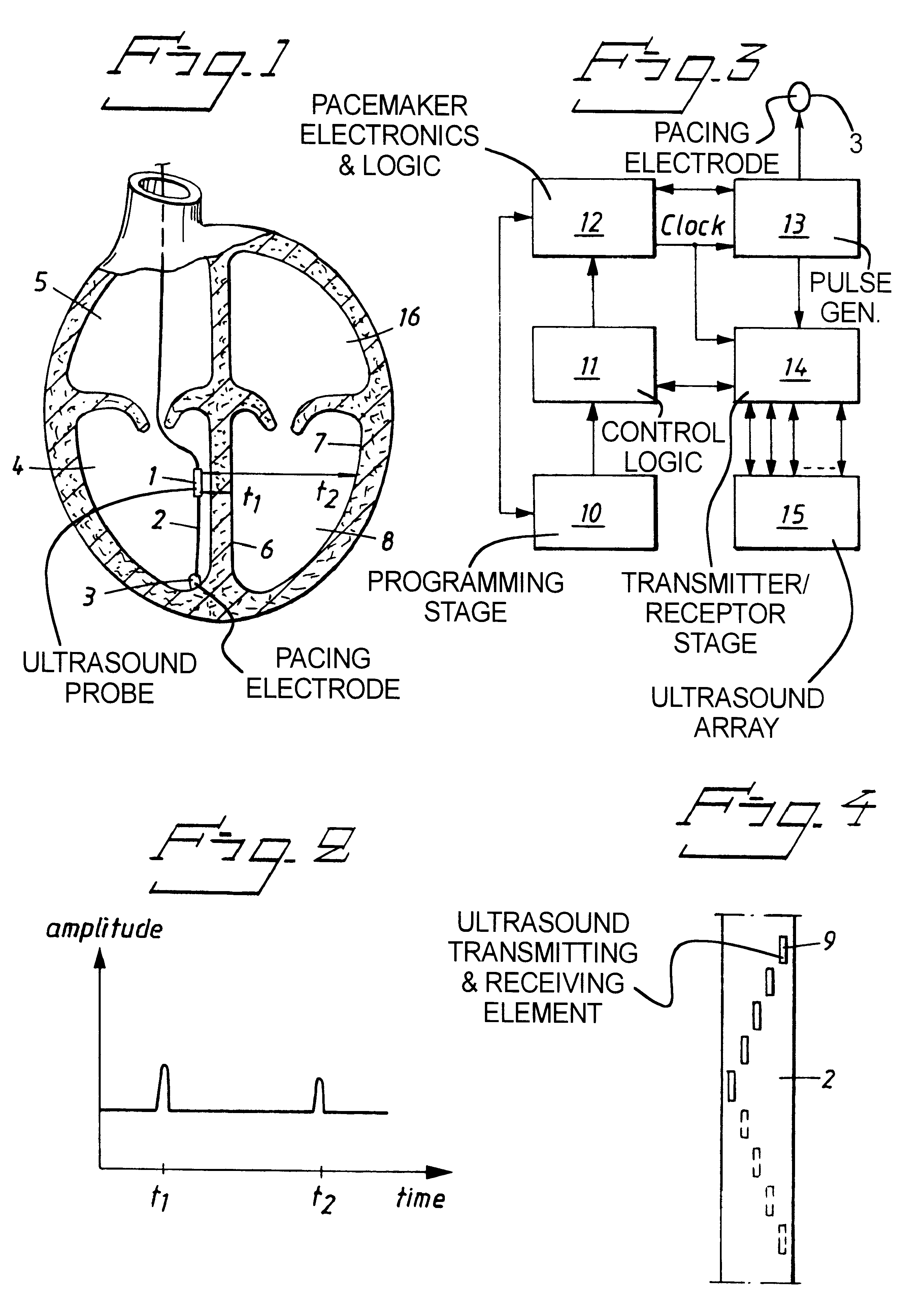Cardiac monitoring device and a rate responsive pacemaker system
a monitoring device and pacemaker technology, applied in the field of cardiac monitoring devices, can solve the problems of unregistered devices, unacceptable size and weight of operations, and requiring quite a lot of energy for their operation
- Summary
- Abstract
- Description
- Claims
- Application Information
AI Technical Summary
Benefits of technology
Problems solved by technology
Method used
Image
Examples
Embodiment Construction
According to FIG. 1 a simple amplitude mode (A-mode) ultrasound probe 1 is mounted near the distal end of a pacemaker lead 2. A tip 3 (at which a pacing electrode may be present) of the lead 2 is anchored at or near the apex of the right ventricle 4 of a heart 5. The ultrasound probe 1 is arranged to detect the position of the medial portion 6 and lateral portion 7 of the endocardial wall of the left ventricle 8 respectively, these portions 6 and 7 defining a cardiac segment from which an echo of a signal emitted by the ultrasound probe 1 is received by the ultrasound probe 1.
The ultrasound probe 1 contains at least one element 9 for emitting a signal and receiving at least one echo of this signal reflected from at least one cardiac segment, here constituted by the medial and lateral portions 6 and 7 of the endocardium. The element 9 may be an ultrasound (piezoelectric) crystal, and the ultrasound probe 1 can contain an array of such elements 9, helically arranged around the periphe...
PUM
 Login to View More
Login to View More Abstract
Description
Claims
Application Information
 Login to View More
Login to View More - R&D
- Intellectual Property
- Life Sciences
- Materials
- Tech Scout
- Unparalleled Data Quality
- Higher Quality Content
- 60% Fewer Hallucinations
Browse by: Latest US Patents, China's latest patents, Technical Efficacy Thesaurus, Application Domain, Technology Topic, Popular Technical Reports.
© 2025 PatSnap. All rights reserved.Legal|Privacy policy|Modern Slavery Act Transparency Statement|Sitemap|About US| Contact US: help@patsnap.com


